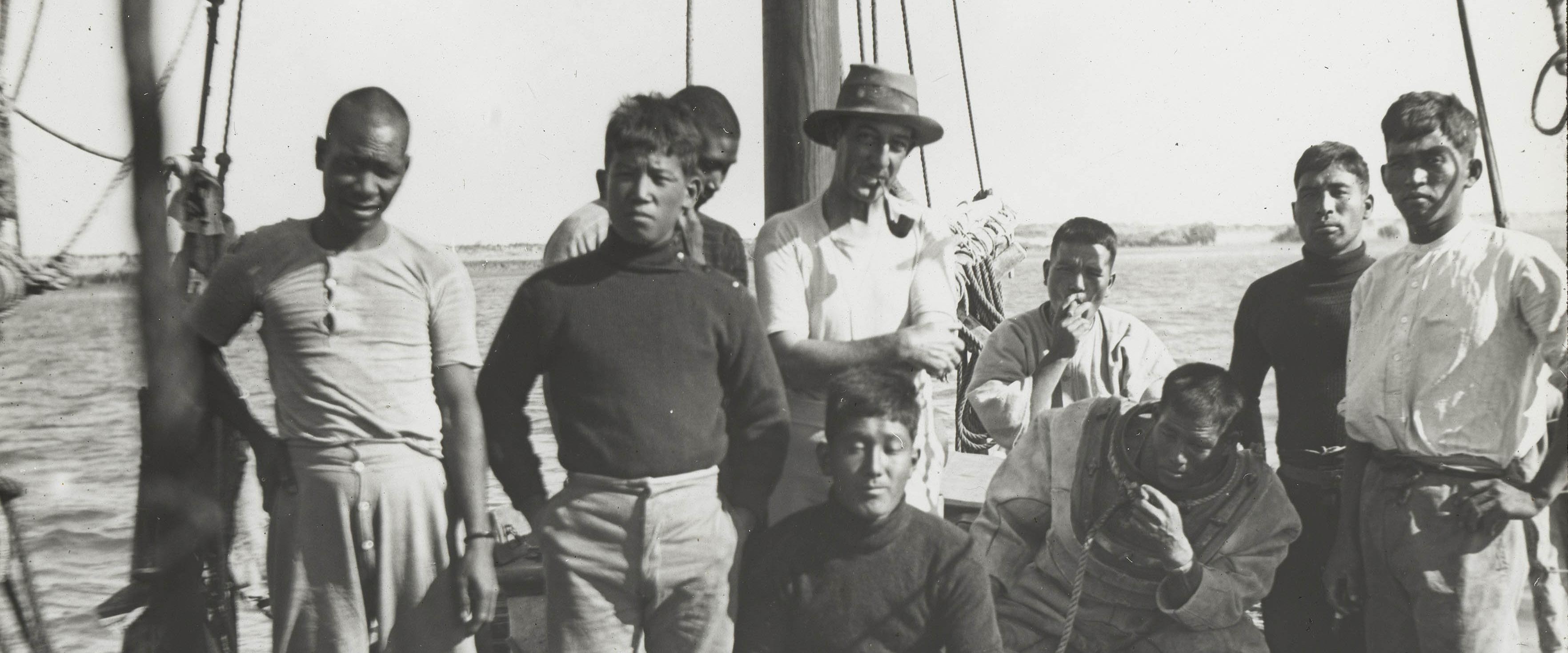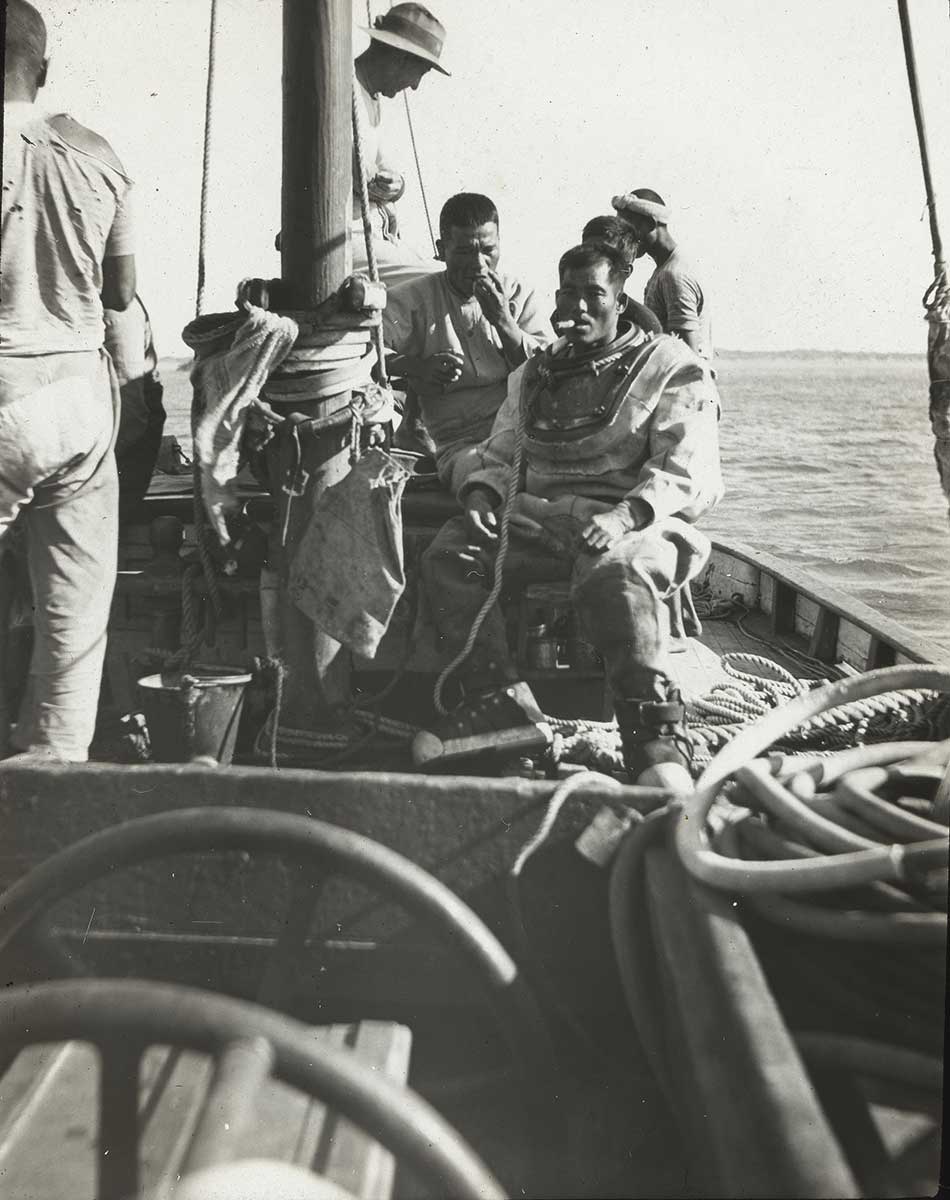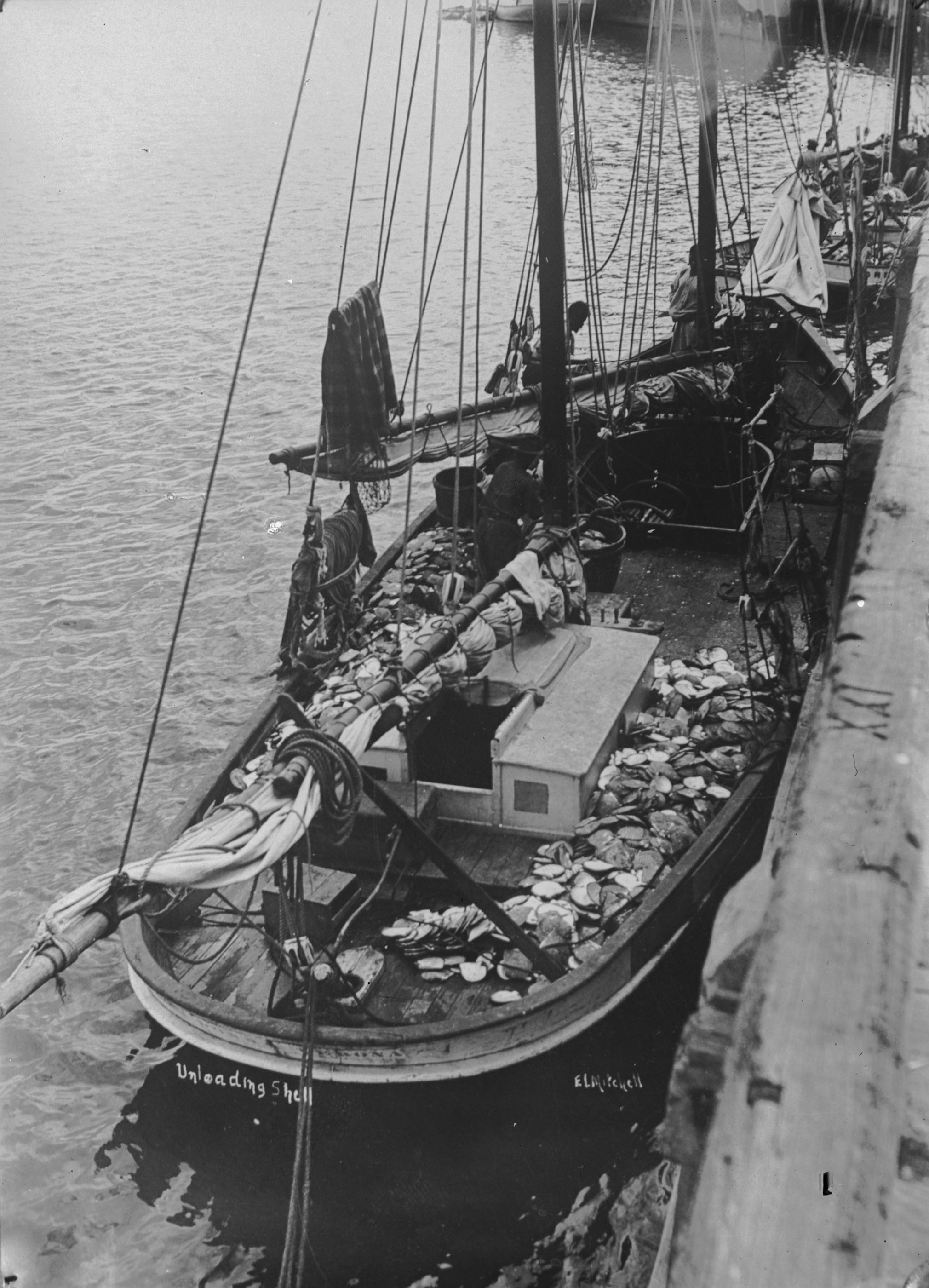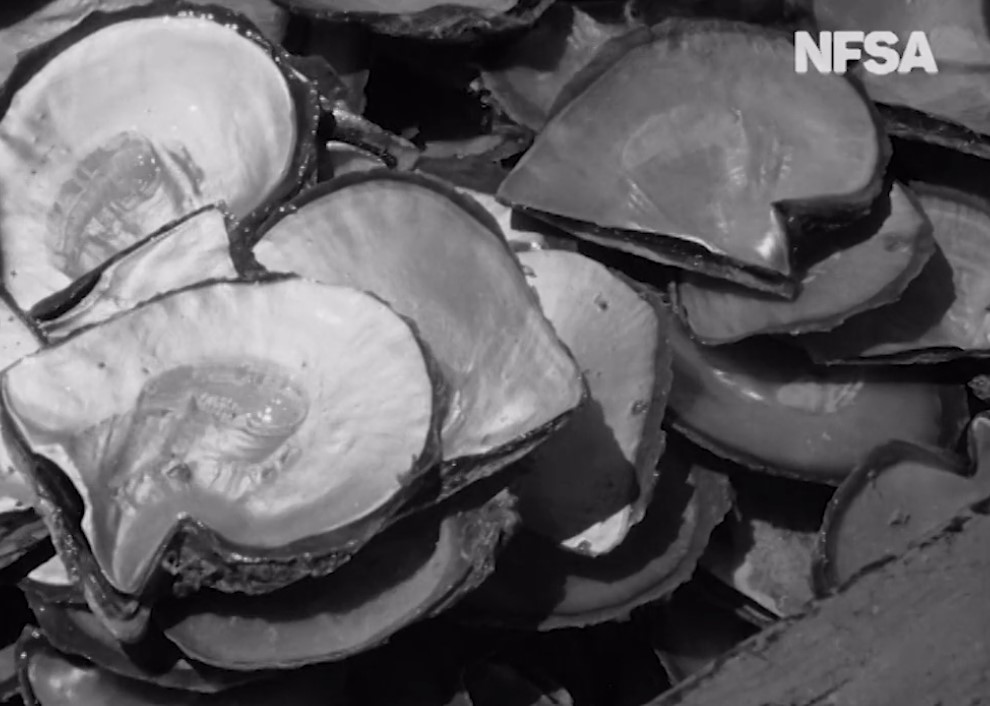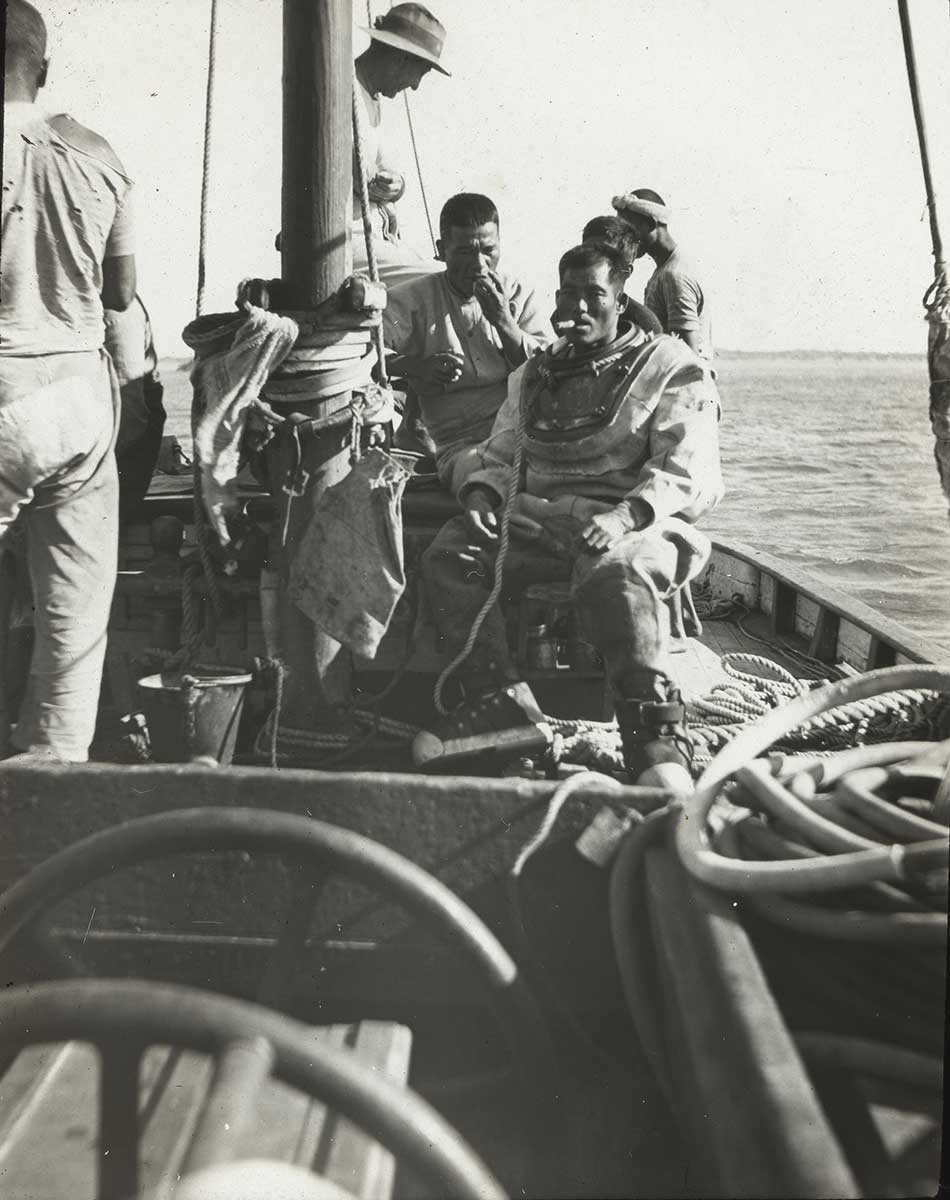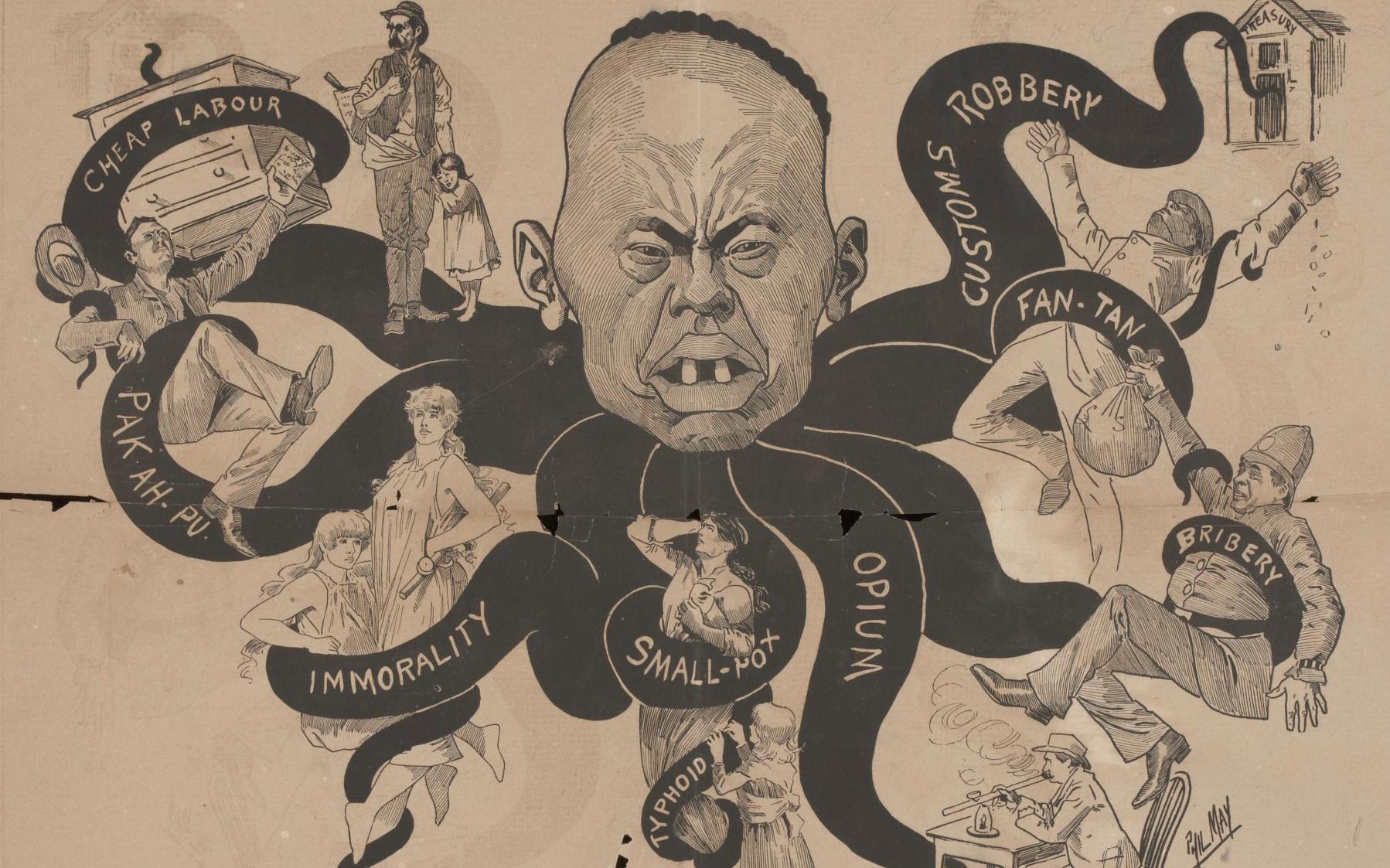Dangerous diving
1888–89: Japanese become the most successful divers in Broome
Dangerous diving
1888–89: Japanese become the most successful divers in Broome
In a snapshot
Aboriginal and Torres Strait Islander people have harvested oyster shell to use as tools and ornaments for thousands of years. In the late 1800s oyster shell became fashionable in Europe and North America, and by the summer of 1888–89, Broome had become the centre of the pearling industry in the colony of Western Australia. The most successful divers were Malays, Timorese and, especially, Japanese.
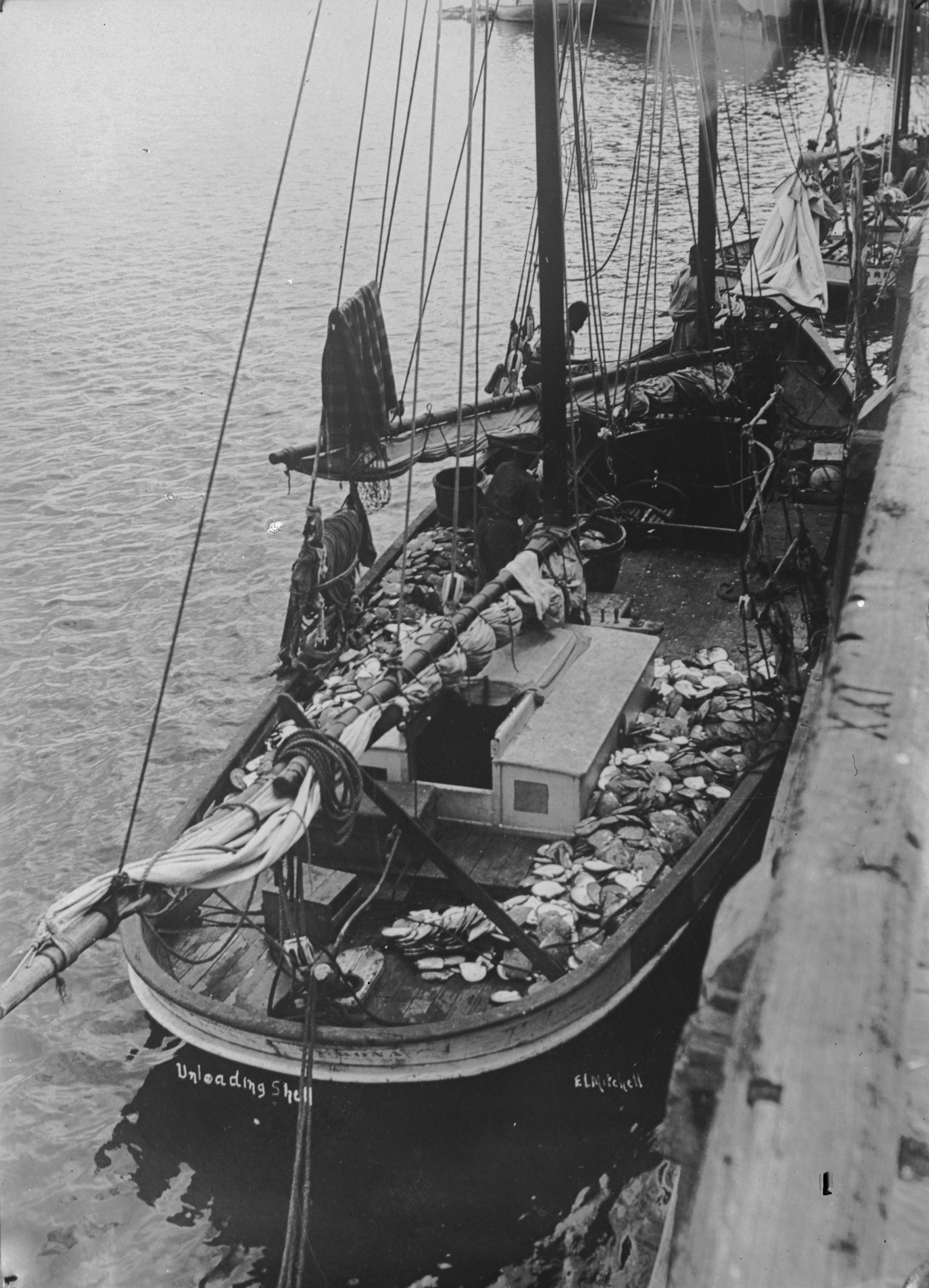
 Can you find out?
Can you find out?
1. Where did the pearling industry begin in Australia?
2. What dangers did pearl divers face and what efforts were made to address these problems?
3. Why were Japanese divers sought after?
How did the pearling industry start in Australia?
The Australian pearling industry started in the Torres Strait. Aboriginal and Torres Strait Islander people had dived for oyster shell there for thousands of years, harvesting it for tools and ornaments. When oyster shell (from which decorative mother-of-pearl was made) became fashionable in Europe and North America, the Australian pearling industry grew to meet the demand.
The waters in the Torres Strait were shallow enough that the divers — mostly Aboriginal and Torres Strait Islander people — could dive just by holding their breath. Divers collected natural pearls and pearl shell from the bottom of the sea.
But as pearl shells in shallow waters became fished out divers had to go deeper. They wore breathing equipment which most Aboriginal divers disliked.
By the 1860s pearling had started in Western Australia. By the end of the 1880s Broome (in the far north-west) had become the most important centre.
What was diving like?
By the 1870s divers had started diving for pearls in deeper water. They used breathing equipment, including a helmet and a rubber air hose, which a crew member pumped air to from the boat. They also worse a canvas suit and steel corselet.
The diver climbed into the sea, weighted down by 6.3-kilogram boots and 50 kilograms of lead strapped to his body. Holding his air hose and a rope, he walked on the seabed spotting and picking up shells. He communicated with the boat by a code of tugs on the rope, including when to pull him and the shells back to the boat. Each dive was usually only 5 to 20 minutes on the ocean floor.
Crews spent weeks or months at sea and slept in tiny 1.4-metre-high cabins. They lived very close together and had to put up with cockroaches and a limited diet.
Research Task
Find out which parts of Japan the Japanese pearl divers came from; one example, the Wakayama prefecture, is mentioned in the text.
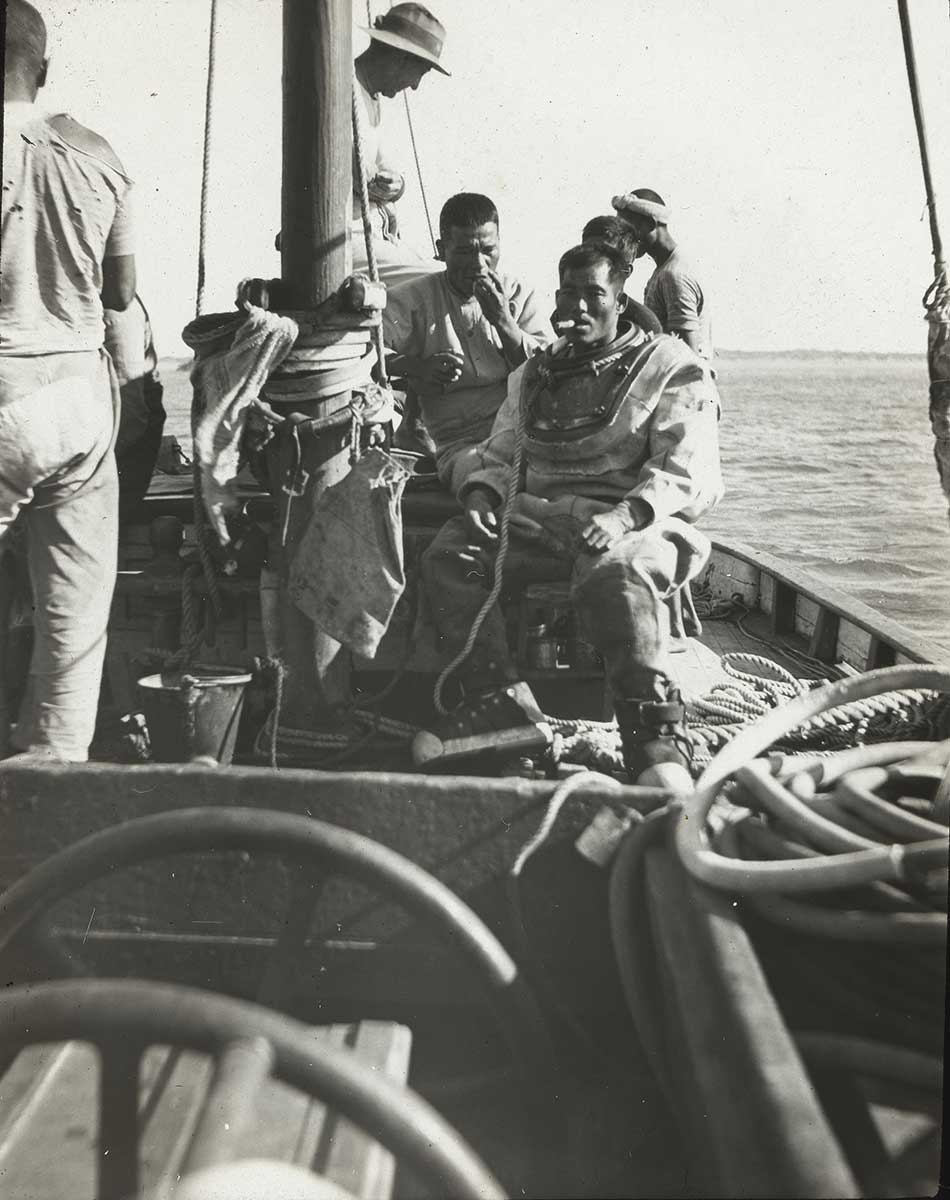
Why was diving in deep waters dangerous?
In the Torres Strait divers usually had to go down only 9 to 18 metres. But the rich pearl shell beds at Broome lay 36 to 45 metres underwater, which meant the diving was much more dangerous.
If divers came up too quickly they would get ‘diver’s paralysis’, or the ‘bends’, caused by bubbles of nitrogen getting into bodily tissues. This caused agonising pain and sometimes death. Divers also often suffered from rheumatism. Other dangers included sharks, hidden holes on the sea floor and snagged safety lines.
How successful were the Asian divers in Broome?
Most of the successful divers were Japanese, along with Timorese and Malays. Many of the Japanese divers came from the coastal Wakayama region of Japan, where people had experience fishing and diving for abalone. White European divers were usually less successful. For example, in 1912, 10 experienced British deep-sea divers arrived in Broome, but within 18 months three had died and the rest had left for other work. In 1916 a Royal Commission into the industry recommended that white Europeans shouldn’t be encouraged to work in such a difficult and dangerous job.
Of course it was dangerous and difficult for the Japanese divers too. It’s likely that more than one in ten of the Japanese divers died each year, and many of them were in their 20s. Conditions were so bad the Japanese Government regularly tried to discourage Japanese people from signing up.
But the Japanese divers were highly sought after because of their energy and endurance. They worked from dawn till dusk, making up to 50 dives a day and staying at sea for up to four months. Although pearling was dangerous, it could be very profitable. Those who succeeded and went home with their earnings became wealthy members of their communities.
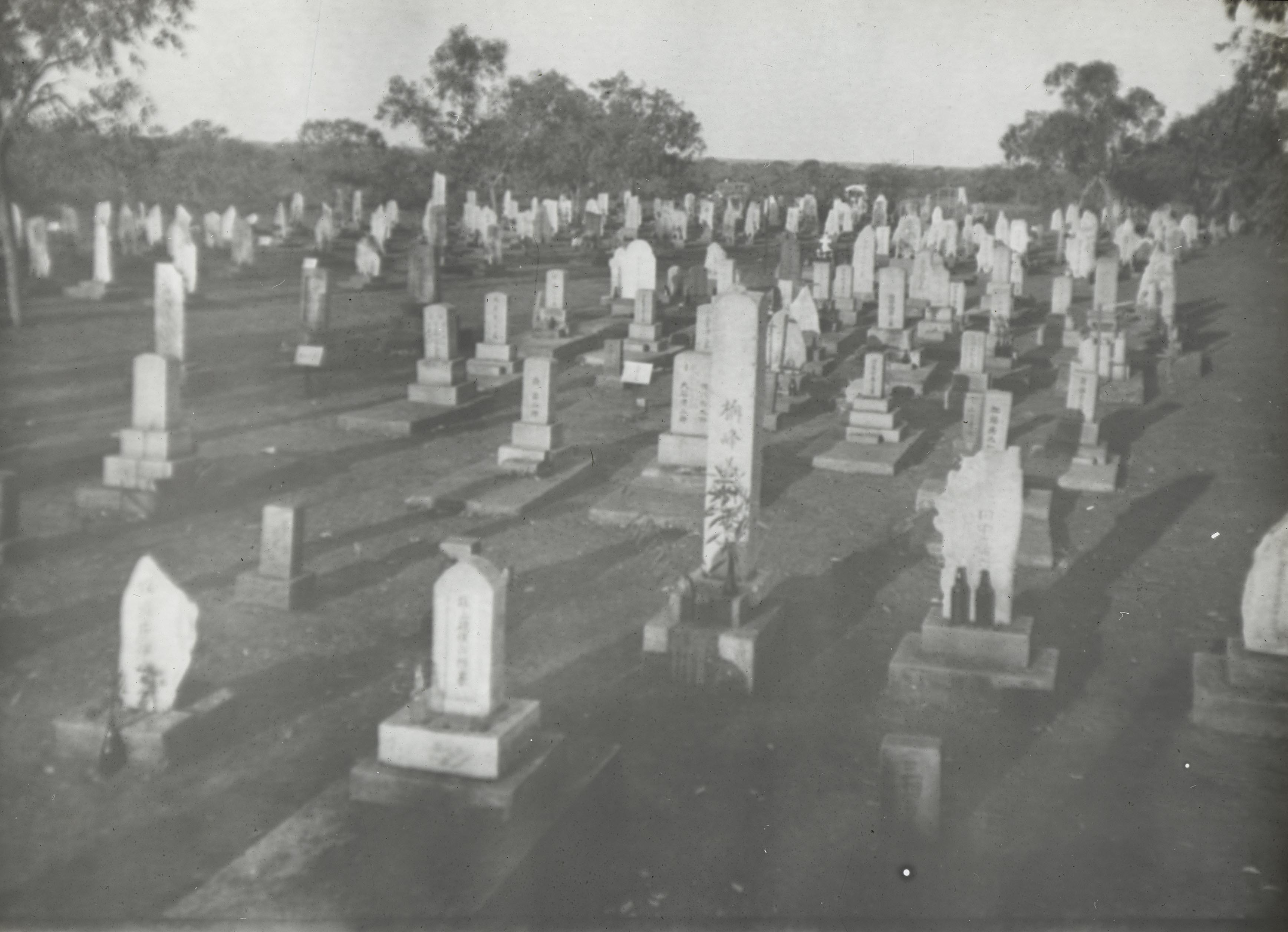
What happened to the Japanese people in Broome?
Under the White Australia policy of 1901, and even in the late nineteenth century, non-European people were generally not allowed to work in Australia. An exception was made for Japanese divers because the pearling industry needed them. But white Europeans tried to limit the number of Japanese crew members on a boat. They also tried to stop Japanese people from owning pearling boats.
Tensions arose between white Europeans and Japanese people, as well as between Japanese people and other Asian groups. Broome had a strong racial social order, with white Europeans at the top, then Japanese people, then other Asians and Aboriginal people beneath them. This led to street fighting and riots in 1907, 1914 and 1920.
Research Task
Research some of the ways pearls and pearl shells were used. Are they used in the same ways today?
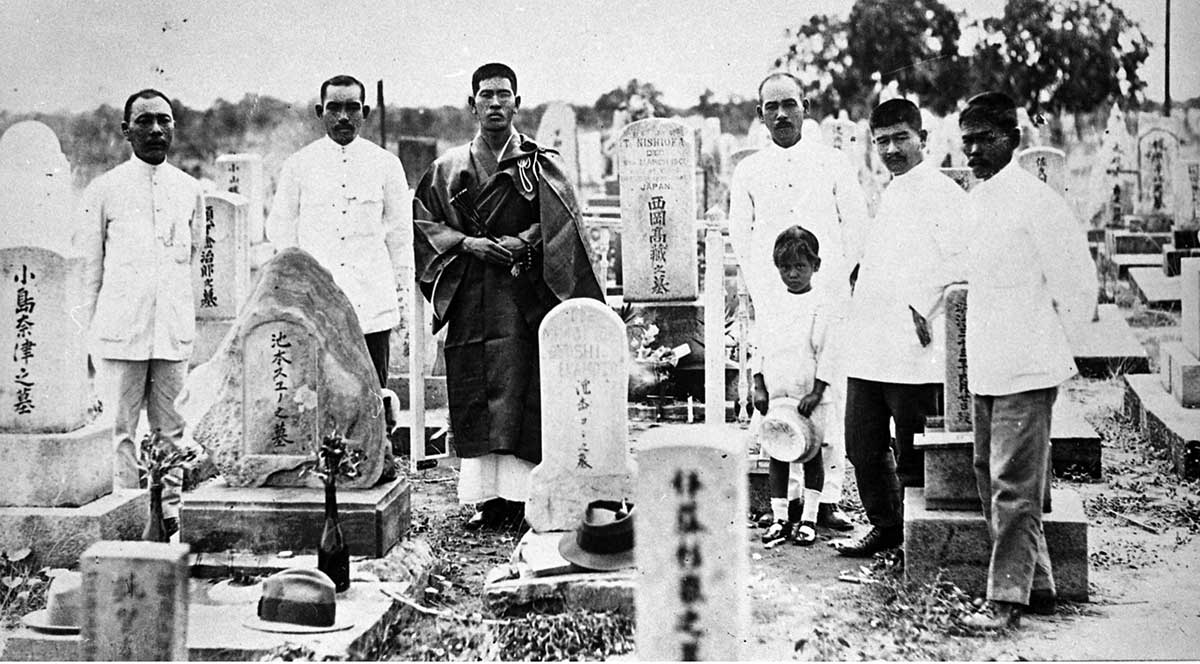
Japanese people in Broome were interned during the Second World War. Some Japanese divers came back in the 1950s, even though some locals were against it. Broome has kept many aspects of Japanese culture, and in 1981 Taiji (a town in Wakayama region, where many of the Japanese divers came from) became Broome’s sister city.
Read a longer version of this Defining Moment on the National Museum of Australia’s website.
 What did you learn?
What did you learn?
1. Where did the pearling industry begin in Australia?
2. What dangers did pearl divers face and what efforts were made to address these problems?
3. Why were Japanese divers sought after?






